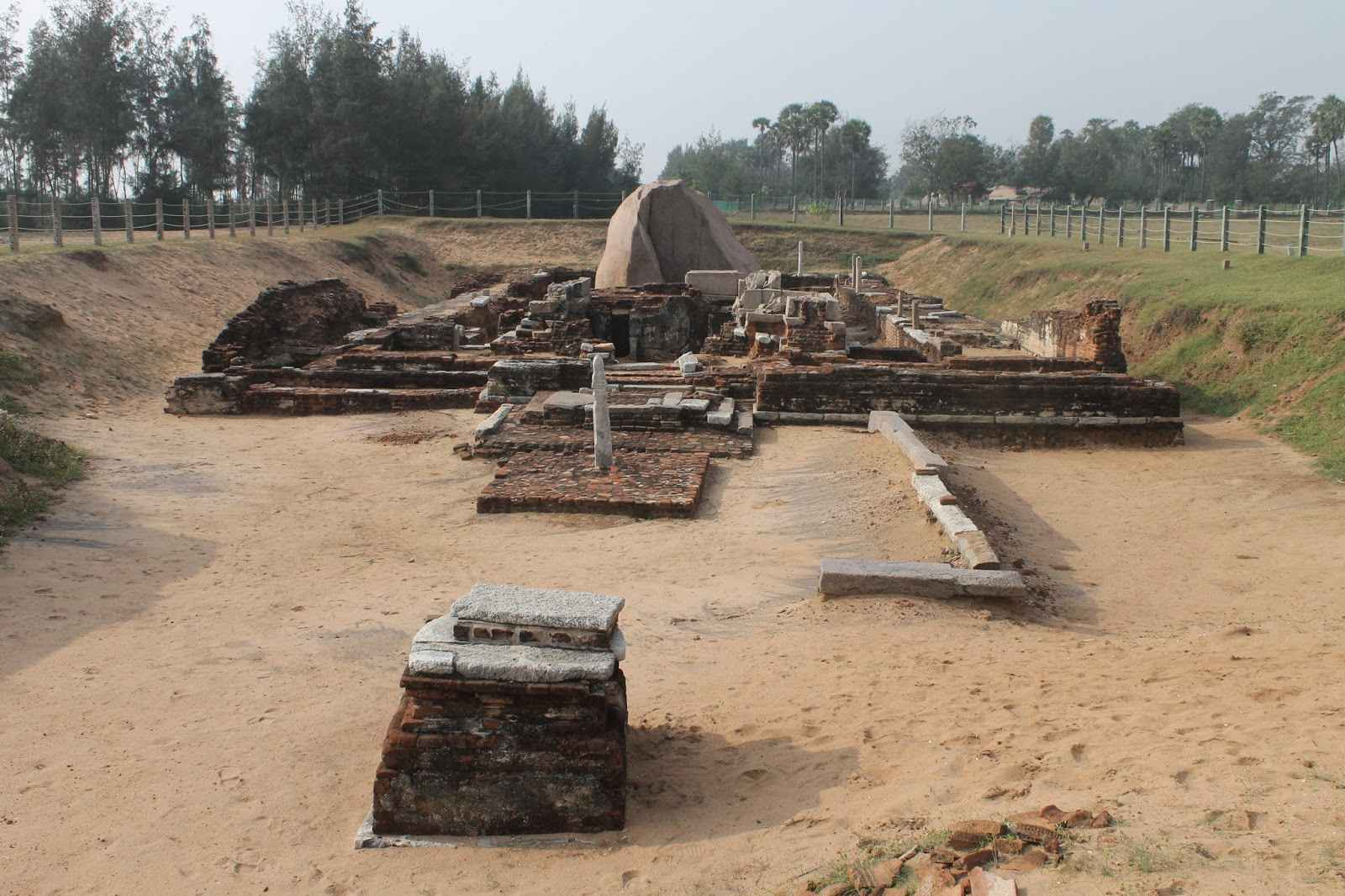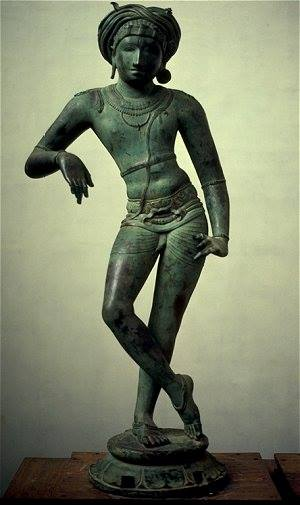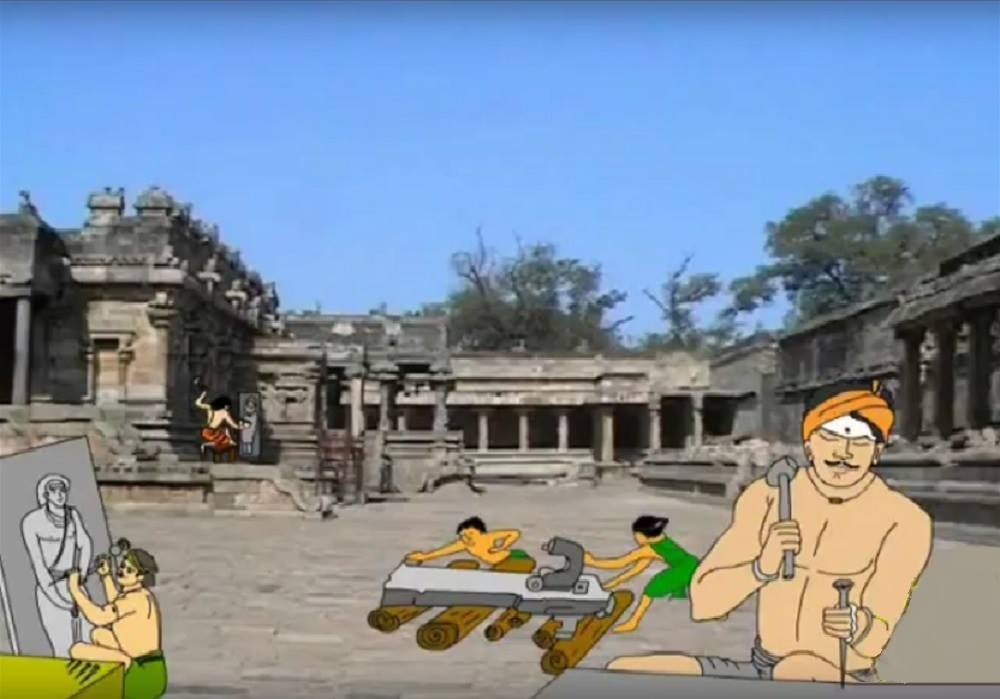[ஒரு அலசல்- தமிழிலும் ஆங்கிலத்திலும்]
சாதாரண பொது மக்களும் இலகுவாக அன்பு செலுத்த, மனதால் உணர, புரிந்து கொள்ள, திராவிடர்களின் [தமிழர்களின்] வழி பாட்டு முறை உருவ வழிபாடாக இருந்தது. அங்கே
அவர்கள் பருப் பொருளாலான மத சின்னத்திற்கு பூசை செய்தார்கள். திராவிடர்கள் ஆண்டவனை நீர், இலைகள், மலர்கள் கொண்டு வழிபட்டார்கள். ஆரியர்களின் வழி பாடு வேள்வி [ஹோமம், ஓமம்] ஆகும். இது ஒரு உருவம் அற்ற வழிபாடாகும். நெருப்பினை ஏற்றி அதில் பலவேறு பொருட்களை, விலங்குகளை இட்டு எரிப்தன் மூலமாக இறைவனை வழிபடும்முறை இது வாகும். ஆண்டவனுக்கு தமது செய்திகளை காவிச் செல்லும் ஒரு தூதராக நெருப்பு தொழிற்படுவதாக அவர்கள் கருதுகிறார்கள். வேதகாலத்தில் இருந்தே இத்தகைய சடங்கு முறைகள், ஆரியர்கள் மத்தியில் வழக்கில் இருந்து வருகிறது. ஆண்டவனின் ஆதரவை பெற, அவரை மகிழ்விக்கும் அல்லது திருப்தி படுத்தும் முறையாக இதை ஆரியர்கள் பின்பற்றுகிறார்கள். தமிழர்கள் வாழ்வில் ஓமச் சடங்குகள் எப்போது தொடங்கியது என்பது குறித்த சரியான தகவல்கள் இல்லை. எனினும் சித்தர்களின் சில பாடல்களில் இதன் தகவல்களை காண்கிறோம். உதாரணமாக, திருமூலரின், பாடல் 1213 :
"ஆமத் தினிதிருந் தன்ன மயத்தினள்
ஓமத்தி லேயும் ஒருத்தி பொருந்தினள்"
என்று கூறுகிறது. இதுவே ஆரியரினதும் திராவிடரினதும் சமயங்களின் முக்கிய அடிப்படை வேறுபாடு ஆகும். அற்புதமான, பிரகாசமான, திகைப்பூட்டும் இமய மலை, வரலாற்றுக்கு முந்தைய கால திராவிடர்களின் இதயங்களை கொள்ளையிட்டது. உதாரணமாக, புறநானூறு 34:
"இமயத்து ஈண்டி, இன் குரல் பயிற்றி,
கொண்டல் மா மழை பொழிந்த
நுண் பல் துளியினும் வாழிய, பலவே!"
என்றும் புறநானூறு 166:
"நீடிய நெடுவரைக்
கழைவளர் இமயம்போல,
நிலீஇயர் அத்தை, நீ நிலமிசை யானே?",
என்றும் வாழ்த்துகிறது. அதாவது, இமயமலையில் திரண்ட மேகங்கள் இனிய ஓசையுடன் பெய்த பெரு மழையின் நுண்ணிய பல துளிகளை விட அதிக நாட்கள் நீ வாழ்க எனவும், மேகங்கள் அகலாது மழை பொழியும் உயர்ந்த மலைகளையுடைய, மூங்கில் வளரும் இமயம் போல் நீ இவ்வுலகில் வாழ்வாயாக எனவும் வாழ்த்துகிறது. இவை எல்லா வற்றையும் விட. நற்றிணை 369 இல்:
"ஞெமை ஓங்கு உயர் வரை இமையத்து உச்சி,
வாஅன் இழிதரும் வயங்கு வெள் அருவிக்
கங்கைஅம் பேர் யாற்றுக் கரை இறந்து இழிதரும்
சிறை அடு கடும் புனல் அன்ன, என் 10
நிறை அடு காமம் நீந்துமாறே.",
அதாவது, பெரும்பாலும் ஞெமை மரங்கள் வளர்ந்த உயர்ந்த இமய மலையின் உச்சியில் இருந்து அருவிகளாக விழுந்து கங்கை ஆறாகப் பெருகி கரைய உடைத்துக் கொண்டு பாயும் வெள்ளம் போல என் காமம் மாலை வேளையில் பெருகி, என்னை அடித்துச் செல்கிறதே. இந்த காம வெள்ளத்தை நானெப்படிக் கடப்பேன்? – என்று தோழியிடம் சொல்லி வருத்தப் படுகிறாள் ஒரு சங்க கால தலைவி. இப்படி அவர்கள் மனதை கவர்ந்த இமய மலையை, தமது கடவுளான சிவனின் உறைவிடமாக திராவிடர் [தமிழர்] கருதினர். நாளாந்த வழிபாட்டிலும் மற்றும் கொண்டாட்டங்களிலும், தமது கடவுளின் இருப்பிடத்தின் மாதிரியை தயார் செய்தனர். இந்த உருவம் சமவெளியையும் அதன் மேல் ஒரு மலையையும், அங்கிருந்து பாயும் ஆறையும் காட்டுகிறது. அது மட்டும் அல்ல, எவரும் தனது வழிபாட்டிற்கு அதை தாமே செய்யக் கூடியதாக இருந்தது. எனினும் எல்லோரும் அப்படி நல்ல சிற்பியாக இல்லாத இடத்து, நாளடைவில், இன்று சிவா ஆலயங்களில் வழிபடும் உருவம் போலாகியது. இந்த வடிவ மாற்றம் அதிகமாக, சிந்து வெளி நாகரிக காலத்தில் நடை பெற்று இருக்கலாம். அப்படியான, உருவம் ஒன்றை, ஆனால் துல்லியமாக இல்லாமல், மஞ்சள் தூளில் அல்லது சாணத்தில், கொண்டாட்ட காலங்களில், தயார் செய்யும் பழக்கம் இன்னும் அதிகமாக எம்மிடம் உள்ளது. இது இன்று பிள்ளையார் என அழைக்கப்படுகிறது. ஆனால், நவீன இந்து மதத்தின் பரிணாமத்தில், பிள்ளையார் ஒரு பிற்சேர்க்கை ஆகும். அது மட்டும் அல்ல, கடவுளின் இருப்பிடம் மலையாக கருதும் திராவிடர்களின் மரபு இன்னும் தென் இந்தியாவிலும் மற்றும் தமிழர்கள் வாழும் பகுதிகள் எங்கும் உயர்வாக மதிக்கப் படுவதையும் காண்கிறோம். உதாரணமாக,
“குன்றம் இருக்குமிடம் குமரன் இருக்குமிடம் ”என்ற பழமொழி இதை பறை சாற்றுகிறது. இங்கு குமரன் அல்லது முருகன், சைவ குடும்பத்தின் மற்றொரு தெய்வம் என்பது குறிப்பிடத் தக்கது. மலையில் கடவுள் உறைகிறார் என்ற தமிழர்களின் நம்பிக்கையின் மூலம் அதிகமாக கயிலை சிவன் என்ற கோட்பாடாக இருக்கலாம். கைலை மலை அல்லது கைலாசம் அல்லது கைலாயம், இமய மலைத் தொடரில் ஒரு புகழ் பெற்ற மலை முடி ஆகும். சுமேரியாவில் கடவுள் சிகுரத்தின் மேல் இருப்பதை காண்கிறோம். எனவே, கடவுள் உயரத்தில் வாழ்கிறார் என்ற திராவிடர்களின் மரபு வரலாற்றுக்கு முந்தையது ஆகும். இவர்களின், தமிழர்களின் இந்த சமயம் 'சைவ சமயம்' ஆகும். சிந்து வெளியில் கண்டு பிடிக்கப் பட்ட முத்திரைகள் குறிப்பாக, தாய் தெய்வமும் சிவாவை ஒத்தபசுபதி என்று அழைக்கப் படும் தியானத்தில் இருக்கும் ஆண் கடவுளும், இன்று வழக்கத்தில் உள்ள சிவ வழிபாடு ஆரியருக்கு முந்திய, சிந்து வெளியில் நடை முறையில் இருந்ததை தெள்ள தெளிவாக்கிறது. ஆரியர்களின் ரிக் [இருக்கு] வேதத்தில், பருப்பொருள் வடிவில் சிவ வழிபாடு கூறப்பட்டு இருந்தாலும், அது உண்மையில் இந்த சின்னத்தை எள்ளி நகையாடி உள்ளதே தவிர, மற்றப் படி சிவ வழிபாட்டு கருத்தினை விவரமாக எடுத்துக் கூறவல்ல என்பது குறிப்பிடத் தக்கது. இங்கு சிவாவை 'சிச்ன தேவர்' என ஏளனம் செய்யப் படுகிறது.
சிச்ன என்பது குறி [சிவலிங்கம்] எனப் பொருள்படும்.இவ் இருவரும், ஆரியரும் திராவிடரும், சுமுகமாயிராத , ஒருவருக்கு ஒருவர் பழியார்வமுள்ளவர்களாக இருப்பதால், இப்படியான திராவிடர்களின் சமயத்திற்கு எதிரான கேலிக்குரிய ஆரியர்களின் கருத்துக்கள் எம்மால் புரிந்து கொள்ளக் கூடியதாக உள்ளது. உதாரணமாக, ரிக் வேதத்தில் வலன், அகி, விருத்திரன், வரசிகன், சம்பரன், அசுவன், மற்றும் வீரப்பெண்மணியான தாணு, போன்ற தஸ்யுக்கள் [திராவிடர்கள் இந்தியாவின் பழங் குடியினர்] பலரின் பெயர்கள் குறிப்பிடப்பட்டுள்ளன. இவர்களை இந்திரன், மற்றும் தேவர்கள் ஆகியோர் அழித்தார்கள் எனக் கூறப் பட்டுள்ளது. மேலும் தஸ்யுக்கள் குறிப்பிட்ட இடத்தில், வலுவான நகரங்களில் அல்லது கோட்டைகளில் வசிப்பவர்களாகக் கூறப்படுகிறார்கள். அவர்கள் வசம் 100 கோட்டைகள் இருந்ததும் கூறப்பட்டுள்ளது. ரிக் வேதம் தஸ்யுக்களை:
1] அநாஸ [மூக் கில்லாதவர்கள் / சப்பை மூக்குள்ளவர்கள்] என்றும்,
2] க்ரதின், (உளறுபவர்கள் / தங்களுக்கு புரியாத வேறு மொழி பேசியதால்) அல்லது ம்ருத்ரவாச (இகழ்ச்சியாகப் பேசுபவர்கள் /தங்களுக்கு புரியாத வேறு மொழி பேசியதால்) என்றும்,
3] அயக்ஞா (யக்ஞம் /வேள்வி செய்யாதவர்கள்) என்றும்,
4] சிச்ன தேவர்கள் என்றும்,
5] தஸ்யு (எதிரி) அல்லது தாஸ (அடிமை) என்றும் சொல்லப் படுகிறது.
உலக வரலாற்றை அலசும் போது, திராவிடர்களின் சமய சின்னத்திற்கு எதிரான ஆரியர்களின் விரோதம், யூதர்களின் சமய சின்னத்திற்கு எதிரான ஜெர்மனி ஆரியர்களின் பகைமையுடன் ஒத்துப் போவதை காண்கிறோம். உலகெங்கும் இன அழிப்பை செய்யும் அரசுகள் எதுவும் நேர்மையாக போர் நடத்தியதில்லை. பூர்வீக குடிகளை, வந்தேறிகள் அழித்து வி்ட்டு, தங்கள் பண்பாட்டையும், கலாச்சாரத்தையும் நிறுவிய வரலாறு, சிந்து சமவெளி நாகரிக அழிப்பிலிருந்து தான் தொடங்குகிறது. ஆரியர்கள் படைத்த அனைத்து இதிகாசங்களிலும் வெற்றி பெறுவதற்காக, எந்த தந்திரத்தையும் கையாளலாம் என்கிற கருத்தை பதிவு செய்திருப்பதை காணலாம். (உதாரணம் இராமயாணம், மகாபாரதம்.).
பதியப்பட்ட வரலாற்றில், இன்னும் ஒரு சமய வழிபாட்டாளர்களின் உணர்வுகளை அவமத்தித்த முதலாவது இனம் இந்த வேத கால ஆரியர்கள் ஆகும். இவர்களின் இந்த வெறுப்பூட்டுகிற செயல் இந்திய தண்டனைச் சட்டம், பகுதி 125 இன் படி ஒரு குற்றச் செயலாகும்.
[கந்தையா தில்லைவிநாயகலிங்கம், அத்தியடி, யாழ்ப்பாணம்]
பகுதி 30 தொடரும்…
ஆரம்பத்திலிருந்து வாசிக்க அழுத்துக/Click to read from the beginning
[இணைத்த படங்கள்: சங்க கால முருகன் கோவிலின் எச்சங்கள், கொற்றவையின் மகன், முருகன் / முருகக் கடவுளின் சிற்பம், சோழர் கோவில்,சிவனின் வெண்கலச் சிலை,
கோவிலும் பக்தர்களும்.]
⇔⇔⇔⇔⇔⇔⇔
An analysis of history of Tamil religion – PART:29
[In English and Tamil]
The Dravidian system
of worship was idolatry, i.e., puja (Poo
–sai – Neri) to a concrete religious symbol that enables an average man to
love, perceive and comprehend his God. The Dravidians used to worship God with water, leaves and flowers. The Aryan
system of worship was ‘yagna’, the imageless worship. The Aryans lit fire and
threw animals into it to propitiate their God. They believed that the fire was
the messenger who carried their message
to their God. This is the fundamental difference between the religions of the
Aryans and the Dravidians.
The Himalayas with
its splendid, dazzling, magnificent and awe-inspiring aura, overwhelmed the
hearts of the Dravidians of the pre-historic age to a great extent that they
revered it as the abode of their God.
During their day-to-day prayers and festivals, they used to prepare the
image of the abode of their God for their worship. That image depicted the
plain land, the mountain over it and the river that flowed from the mountain over the plain. As everyone
was permitted (in sharp contrast to the way the Brahmins had later appropriated to themselves the right of
access to the deity) to prepare such an image for one’s own worship, and given the fact that all the people were not sculptors, the image, in due
course, took the present form in which
it is installed and worshipped in the Siva temples. Such transformation in
shape had taken place in the Indus
Civilization period itself. It is worthwhile to mention here that the practice
of preparing such an image, though not in accurate shape, with turmeric paste
or cow-dung, is still prevalent among us,
during festival occasions. The origin of this practice can be traced
only to the aforesaid worship of Lord
Siva of pre-historic origin. (That the image is now called as Pillaiyar does
not contradict the fact, as this story
of Pillaiyar was due to the later -day evolution of modern Hinduism
which even then held that the said Pillaiyar belonged to the same Saivite
cosmic family of Lord Siva). Besides, the Dravidian custom of regarding and respecting the mountains as the abode of
their God is still held in high esteem in the Tamil land or south India that it
gave birth to the adage, 'Where hillock
is there, Kumaran is there' /
“Kundram Irukkumidam Kumaran Irukkumidam”
(Kumaran, the Lord Muruhan, being another deity of the same cosmic family) This
belief of Tamils in venerating the mountains as the abode of God can also be traced
only to the concept of the Kayilai of
Lord Siva. The tradition of the Dravidians to visualize their God to be at the
highest place, even in the material sense is, therefore, of pre-historic
origin. Their religion was Siva-ism, the Saivism. And, the seals found in the Indus Valley include the Mother Goddess, the Siva form,
and a male God seated in yogic posture. It, therefore, becomes crystal clear
that Siva worship, in its present form,
had been practiced during the pre-Aryan Indus Civilisation period
itself.
The earliest
reference to the people who worshipped Siva in this material form is found in
the Rig Veda. But, these Rig Vedic references were only in the context of
deriding the symbol and not in the context
of expounding its
concept, Here, The Lord Siva is derided as ‘Sisnadevata’ in Rig Veda. Given the
fact that these two peoples were so ill disposed towards each other, such
derisive remarks against the religion of
the Dravidians by the Vedic Aryans are understandable. An analysis of the world
history shows that the antagonism of the Vedic Aryans towards the religious
symbols of the Dravidians is matched only by
the antagonism displayed by the Aryans of Germany towards the religious
symbols of the Jews. The abominable manner in which the Germans desecrated them is of recent history. ‘Sisna’ in Vedic
language meant the private part of the
males. The words ‘linga’ also means the same thing. In English it came to be
called as ‘phallus’. The Vedic Aryans were
the first people in the recorded history of the world to offend the
feelings of
the other religious
group in such a repulsive manner which
is a crime under the present day Indian Penal Code Section 125.
[Kandiah Thillaivinayagalingam, Athiady, Jaffna]
Part 30 Will follow...
[Pictures attached: Remains of Murugan Temple of Sangam period , korravai's
son / Sculpture of the god Murugan, Chola temple,Bronze Statue of Shiva, temple
and worshippers]
⇔⇔⇔⇔⇔⇔⇔






No comments:
Post a Comment